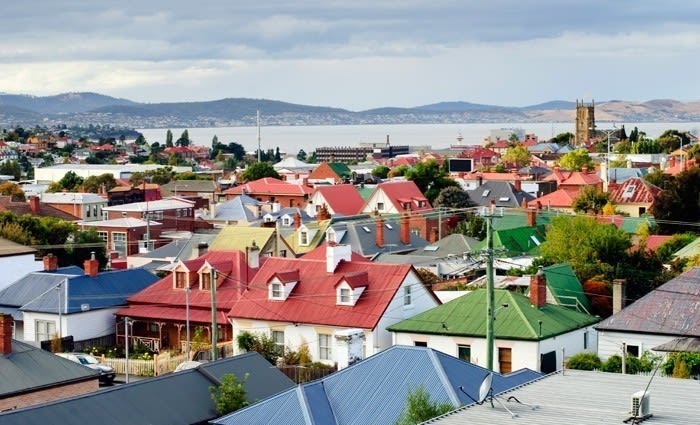Tasmanian property market worth considering: Terry Ryder
Most people don’t let the facts get in the way of an entrenched attitude.
For six months or more, I’ve been getting blank stares or responses like “Seriously?” whenever I suggest to investors they should be considering Hobart and Tasmania.
It’s really easy to get a bad reputation and extremely hard to lose it. Tasmania has the image of a basket base economy. A state that’s losing population. A property market bereft of growth.
For many years, all of that has been true. It’s true no longer.
But most people won’t be convinced until they read there’s a boom on. And by then it will be too late to buy well.
Perhaps it is already. According to the latest House Price Report from Domain, Hobart median prices rose 8.7% for houses and 7.1% for apartments in 2015. The apartment result is the second best among the capital cities, after Sydney.
Other research sources have smaller growth numbers for Hobart but there’s no doubt that this market is moving. Throughout 2015, sales activity rose. Each quarter of the year recorded more sales than the same period the year before. Inevitably that translates into price growth.
Why is this happening? Because the Tasmanian economy is mounting a strong recovery. I’ve been recording this over the past six months or so, as an increasing number of surveys and reports by major organisations like ANZ Bank, NAB and others have recorded increasingly positive outlooks for the state economy.
Here are a few of them:
- The NAB business survey for August 2015 showed business confidence in Tasmania at plus 12 — three times higher than the next best states, NSW and Queensland. Chamber of Commerce CEO Michael Bailey said at the time this was further proof that Tasmania’s economy was looking up. “There’s a feeling Tasmania is a very exciting place to be right now,” he said.
- MyState’s quarterly report showed a rebound in economic indicators for Tasmania. MyState’s David Harradine said Tasmania was no longer the softest state economy on several indicators. “The lower Australian dollar, plus low interest rates, are providing an important tailwind,” he says. “This will continue to present opportunities for improvements ... The lower dollar is positive for the tourism, agriculture and manufacturing sectors which together represent a significant portion of overall activity and jobs.”
- A Sensis survey found that Tasmania leads the nation in business confidence and its State Government is the most popular among small businesses. “Businesses see the Government as supportive and interested in small business and believe it is working to reduce bureaucracy,” Sensis CEO John Allan said. The Sensis Business Index showed business confidence has tripled in the state, rising 46 points to +64 and is now 25 points above the national average. Hobart was the most confident capital city, followed by Sydney and Brisbane, while confidence in regional Tasmania was up 52 points to +60, which ws the highest regional score in the nation.
- A Deloitte Access Economics Business Outlook report described the Tasmanian economy as “well and truly on the rise”.
- Tasmanian Chamber of Commerce CEO Michael Bailey said the effect of Australia’s post-mining boom slump on interest and exchange rates was breathing life into Tasmania’s tourism, manufacturing, forestry, building and overseas student industries. “We are seeing phenomenal opportunities, particularly for Tasmania’s agricultural and aquaculture industries,” he said.
- State Treasurer Peter Gutwein said the State Government was working to grow the economy with its $315 million jobs package and $1.8 billion infrastructure program.
- The quarterly ANZ/Property Council survey said Tasmania is about to experience a surge in foreign investment. It forecast that foreign investors would be responsible for 14% of residential purchases in Tasmania in the March 2016 Quarter, compared to 4% or below throughout the quarters of 2015.
The situation in Tasmania right now feels a little bit like 2003. Back then, after prices had surged in mainland cities like Melbourne, investors looked across Bass Strait, noticed how cheap everything was and generated a price boom.
Hobart currently has a median dwelling price around $330,000, compared to $600,000 in Melbourne and $775,000 in Sydney.
Cheap real estate, a market with rising momentum, underpinned by a strongly moving economy - it’s a package worth considering.
Terry Ryder is the founder of hotspotting.com.au. You can email him or follow him on Twitter.
